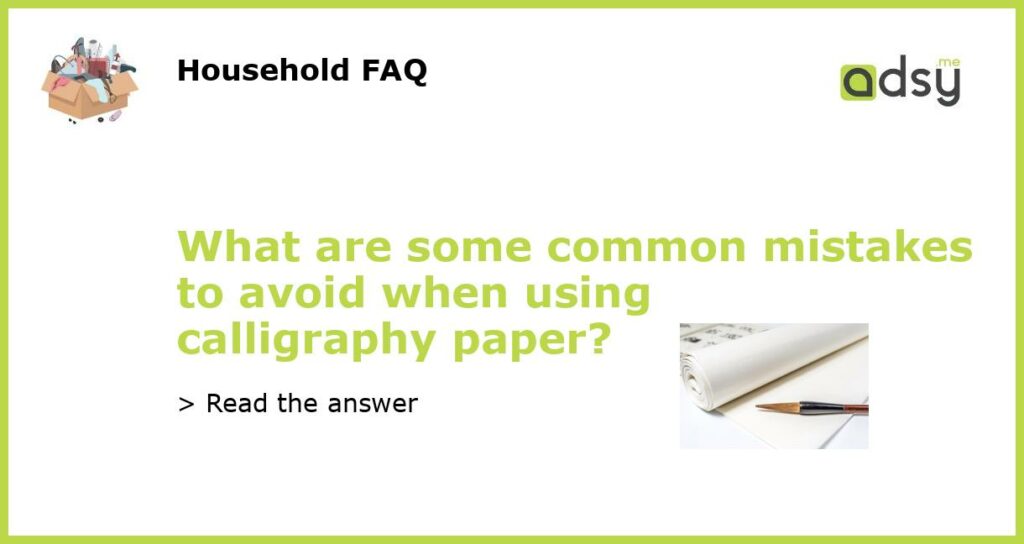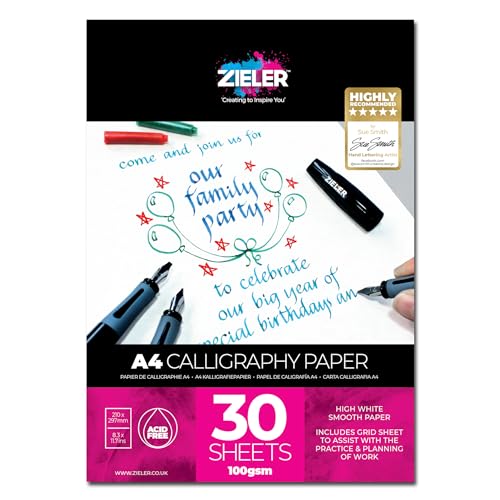Using the wrong type of paper
One of the most common mistakes people make when using calligraphy paper is using the wrong type of paper. While any type of paper can technically be used for calligraphy, some types are much better than others. For instance, watercolor paper is often a popular choice because it is thick, absorbent, and sturdy, making it easy to control the ink. On the other hand, regular printer paper is often too thin and can result in ink bleeding or smudging.
Not considering the weight and texture of the paper
Another mistake is not taking into account the weight and texture of the paper. The weight of a paper refers to how thick or heavy it is, while the texture refers to the roughness or smoothness. Different types of calligraphy require different weights and textures of paper, so it is important to consider this when choosing your paper. For instance, if you are doing pointed pen calligraphy, you will want a smooth paper, while if you are doing brush calligraphy, a slightly rougher paper may be better.
Skipping the prepping stage
Before you begin writing on your calligraphy paper, it is important to prep it properly. Skipping this stage is another common mistake people make. Prepping your paper involves removing any residue or oils from the surface, as well as sizing the paper to prevent ink from bleeding or feathering. There are several methods you can use to prep your paper, including rubbing alcohol, gum sandarac, or sizing liquid.
Using the wrong ink
The ink that you use for calligraphy is just as important as the paper you choose. Using the wrong ink can lead to smudging, bleeding, or the ink not adhering properly to the paper. It is important to choose an ink that is specifically designed for calligraphy and one that works well with the paper you have chosen. For example, if you have chosen a very absorbent paper, a thicker ink may be required.
Not practicing on scrap paper first
A final mistake that many people make when it comes to calligraphy paper is not practicing on scrap paper first. Calligraphy requires a lot of practice and patience, and it can take some time to get used to writing with the proper technique. Instead of starting on your good calligraphy paper right away, practice on a few sheets of scrap paper first to get the hang of it. This will not only help you get more comfortable with the technique, but it will also save you from potentially ruining your good paper.






